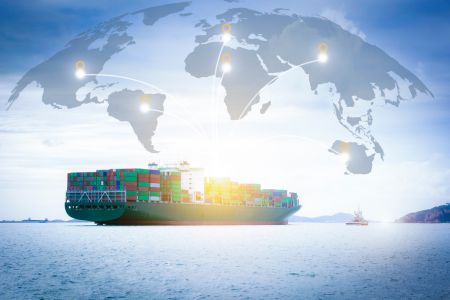
Setting the Foundation for Retail Supply Chain Sustainability

Setting the Foundation for Retail Supply Chain Sustainability
During the American Apparel and Footwear Association (AAFA)’s 2022 Traceability and Sustainability Conference held in early August, it became clear that retailers and apparel brands are struggling with how to adapt to new legislation and social pressures related to supply chain sustainability.
This post builds on a recent Talk Retail to Me podcast episode, “Achieving Sustainability Maturity in the Retail Supply Chain,” which focuses on findings from the conference.
We break down the very grey area of sustainability in the retail industry, outline the biggest challenges, and provide direction in defining the first steps brands can take in including sustainability in their overall supply chain capabilities roadmap.
Supply Chain Sustainability Consumer Perspectives and Brand Initiatives
The objective of the AAFA conference was to bring brands and retailers together to discuss supply chain sustainability and have an open dialog on how to minimize the industry’s global impact. From landfills to pollutants and microplastics, those who attended recognized that there is a significant way to go. Many speakers at the conference openly discussed that consumers pay attention and expect a brand to be environmentally responsible, yet most consumers do not want to pay more for it. Most attending the conference acknowledged that environmentally responsible sourcing and overall retail sustainability efforts have become “table stakes.” However, most also agreed that the definition of “sustainability” is broad, leaving most companies wondering where and how to start.
During the conference, several industry-leading brands, such as American Eagle Outfitters, Wolverine World Wide, and Everlane discussed their internal supply chain sustainability initiatives. From resale to traceability, the initiatives and levels of sophistication are varied. Some give their initiatives “teeth” and tie financial measures, credit, or executive compensation to targets.
However, it was widely recognized that most organizations within the retail and apparel industry are at the very early stages of their sustainability journey. Further complicating the topics are the many and varied new regulations in the US and globally, such as the Uyghur Forced Labor Prevention Act (UFLPA), the New York Fashion Act (postponed but coming state by state), proposed Securities & Exchange Commission (SEC) sustainability reporting rules, and the EU corporate sustainability reporting directive (CSRD). These compliance requirements are all complex and arduous. This complexity is forcing many companies to switch their focus from potentially more consumer-visible initiatives, like resale programs, and pushing them to focus on very foundational and seemingly burdensome requirements.
Data Challenges in Supply Chain Sustainability Efforts
The difficulty many brands are facing in defining and prioritizing their supply chain sustainability efforts stems from data. There is a fundamental lack of supply chain data throughout the retail and apparel industry. Further, many brands do not have a solid data governance program in place to manage even their internal data, much less data from external entities and supply chain partners.
Our global supply chains have grown more and more complex over the years, with increasing price pressure and rising consumer expectations pushing the industry to continue to experiment and develop capabilities in new countries and regions. With every new primary or tier one supplier, an expansion of the “supplier’s supplier” or tier two and three suppliers has resulted. While many primary or tier one suppliers are relatively sophisticated and often have access to tracking technology or systems back to the brands, the level of sophistication decreases dramatically down the supply chain. This has resulted in a very fundamental lack of supply chain data and overall visibility.
Sustainability in the Supply Chain Capabilities Roadmap
The theme of getting started with some of the basic data building blocks was prevalent throughout the AAFA conference. While retailers and apparel brands recognize that the foundational work of gathering, validating, harmonizing, and cataloging data is not something around which they can build a PR campaign, they also acknowledged that this work is a critical first step. We advise including this key activity in a larger supply chain capabilities roadmap that includes sustainability as a key element. Collecting supplier and other relevant external data will provide a critical foundation that can improve capabilities for better responses to macroeconomic variables and disruptions, promote efficiencies throughout the supply chain, and position brands to meet current and future sustainability reporting requirements.
Mark Burstein of Logility has outlined a maturity curve that outlines key data requirements in this critical first step. Download the supply chain sustainability maturity curve here.
Those organizations that do not recognize this key first step will find themselves further “behind the eight ball” both competitively, as well as in their sustainability journey. Indeed, not having a solid grasp of detailed supply chain data will have far-reaching implications throughout the organization, including hampering the ability to take advantage of advanced technologies.
However, those that embrace taking the first fundamental step in their overall capabilities roadmaps that focuses on getting their supplier data in place will be much better positioned to react to external competitive threats and disruptions, achieve internal sustainability goals, and comply with new and future legislative requirements.
You may also like




